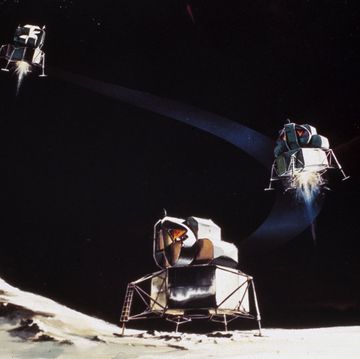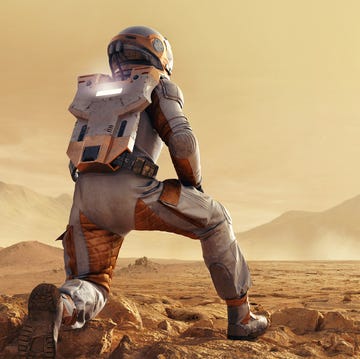NASA's Lunar Reconnaissance Orbiter Camera (LROC) is taking the highest-resolution images of the moon's surface from space, scouting locations for future astronaut or robot landings. But LROC may also have discovered the resting place of Lunar Orbiter 2, a NASA spacecraft that disappeared on the far side of the moon in 1967. Orbiter 2 was in an intentional death dive, but NASA never knew the site of its impact. The debris from an impact angle of 45 degrees or more spreads out like butterfly wings, says LROC science operations center manager Ernest Bowman-Cisneros. While losing equipment is unavoidable, examining its crash sites is useful. "They are great laboratories for studying small impacts on the moon," Mark Robinson, LROC's principal investigator, says.
NOTABLE LUNAR CRASHES
A.) APOLLO 14
Country: U.S.
Launch: Jan. 31, 1971
Crash: Feb. 4, 1971
INTENTIONAL
The upper stage of Apollo 14's Saturn IVB rocket creates a 115-foot-wide crater and causes a moonquake that reveals seismic details about the lunar interior.
B.) SURVEYOR 2
Country: U.S.
Launch: Sept. 20, 1966
Crash: Sept. 22, 1966
UNINTENTIONAL
The soft touchdown is supposed to aid the Apollo program, but the spacecraft crashes when one of three thrusters fails to ignite.
C.) LUNA 15
Country: U.S.S.R.
Launch: July 13, 1969
Crash: July 21, 1969
UNINTENTIONAL
The main retrorocket of this lander, used in the Soviets' second attempt to bring moon rocks back to Earth, fails to fire.
D.) CHANG'E 1
Country: China
Launch: Oct. 24, 2007
Crash: March 1, 2009
INTENTIONAL
The first Chinese robotic lunar mission transmits 175 gigabytes of information before it plummets to the surface.














